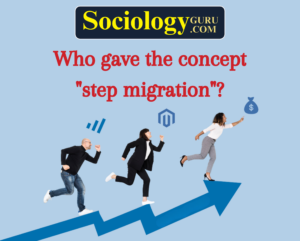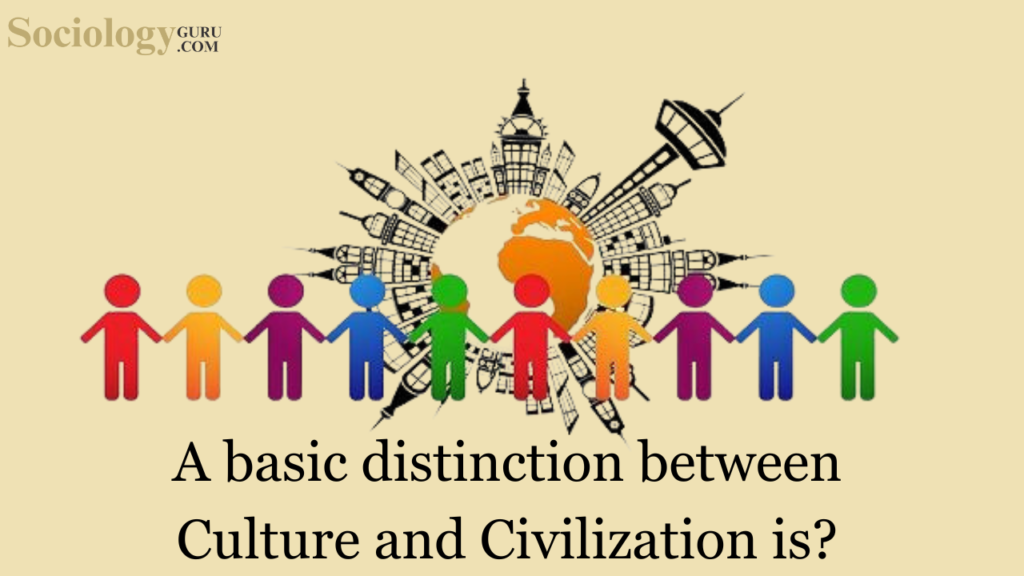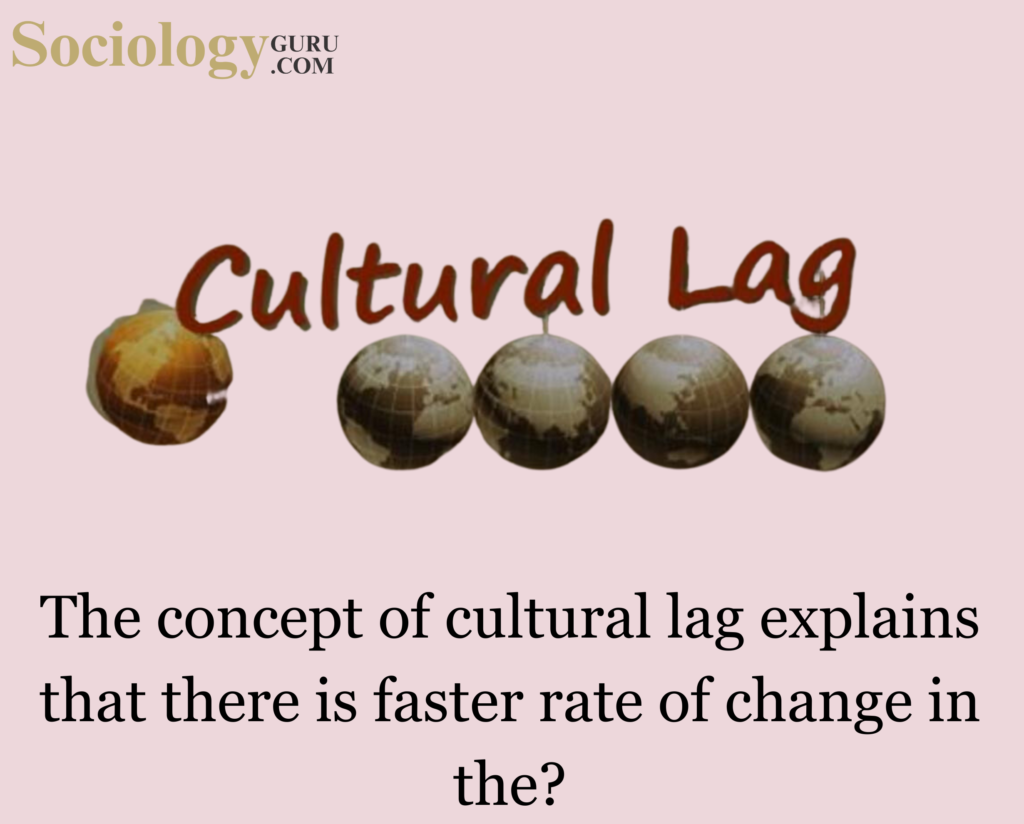Question: Who gave the concept “step migration”?
- M. Weiner
- L. Coser
- Ravenstein
- R. Dahl
Answer: (3)The question revolves around the concept of “step migration,” and the provided options are (a) M. Weiner, (b) L. Coser, (c) Ravenstein, and (d) R. Dahl. The correct answer is (c) Ravenstein. Ernst Georg Ravenstein, a German-English geographer, is credited with introducing the concept of step migration in 1885. This concept offers a valuable framework for understanding the sequential and gradual nature of migration, particularly as rural inhabitants move closer to urban areas of growth. Step migration, as conceptualized by Ravenstein, refers to the process where individuals or communities undergo migration in distinct stages. Instead of a direct and immediate shift from a rural to an urban setting, migrants undertake a series of steps, progressively moving towards more urbanized and developed areas. This concept has significant implications for understanding migration patterns, especially in the context of global urbanization and the complex dynamics that influence population movements. Ravenstein’s observations, made in the late 19th century, laid the groundwork for understanding the nuances of migration. His work was part of a broader effort to establish principles and laws governing migration patterns, and step migration emerged as a key concept in this endeavor. Ravenstein’s laws of migration, of which step migration is one component, provided a theoretical foundation that scholars continue to build upon and refine. The core idea behind step migration is the recognition that migration is often a gradual and incremental process. Rather than an abrupt relocation, individuals or communities may take several intermediary steps before reaching their ultimate destination. These steps could involve moving from a rural village to a small town, then to a larger city, and finally to a major urban center. The concept of step migration is not confined to historical contexts but remains relevant in contemporary discussions on global migration trends. In the twenty-first century, step migration is recognized as a common form of international migration. Scholars have conducted extensive studies to analyze and document instances of step migration in various regions, highlighting its prevalence and impact on both sending and receiving areas. One of the challenges in studying step migration lies in the lack of a universal definition and standardized measurement. Different scholars may use varying criteria to identify and analyze step migration, leading to debates and variations in research findings. Despite these challenges, the concept remains crucial for understanding migration dynamics and designing effective policy interventions. Step migration is not solely an academic concept; it has practical implications for policymakers, particularly in the context of rural and urban development. Recognizing and understanding step migration patterns can inform the design of policies that address the needs and challenges associated with population movements. This includes infrastructure development, resource allocation, and the provision of essential services in both rural and urban areas. In recent years, step migration has gained renewed attention due to its association with climate change. Abrahm Lustgarten, Senior Environmental Reporter for ProPublica, highlighted the role of step migration in the context of climate-induced population movements. Stepwise migration, as Lustgarten terms it, refers to a characteristic pattern of migration driven by the impacts of climate change. Climate change can lead to shifts in environmental conditions, such as changes in temperature, precipitation patterns, and the frequency of extreme weather events. These changes can affect agricultural productivity, water availability, and overall livelihoods, prompting people to migrate in a stepwise manner. Individuals may first move from rural areas to nearby towns, seeking economic opportunities or escaping environmental challenges. Subsequently, they may continue their journey to larger urban centers in search of better living conditions, employment, and social services. The linkage between step migration and climate change underscores the complex interplay between environmental factors and human mobility. As the impacts of climate change intensify, understanding and addressing step migration becomes increasingly important for policymakers, environmentalists, and humanitarian organizations. In conclusion, step migration is a concept introduced by Ernst Georg Ravenstein in 1885, offering a framework to understand migration as a sequential and gradual process. It highlights the idea that migrants often undergo a series of intermediary steps before reaching their final destination, with implications for both rural and urban areas. While Ravenstein’s observations were part of a historical context, step migration remains a relevant and recognized phenomenon in contemporary discussions on global migration patterns. The concept’s applicability to climate-induced migration adds a contemporary dimension, emphasizing its significance in addressing the complex challenges posed by environmental changes. As scholars continue to study and refine the concept, step migration remains a valuable tool for understanding the dynamics of human mobility and informing policy responses in an ever-changing world. |
Take a Quick Sociology Quiz to measure your Performance
Frequently Asked Questions:
1. Question: Define the term “ethnic movement” and provide an example from India.
Answer: An ethnic movement refers to a collective effort by a group sharing common cultural, linguistic, or religious traits, seeking to assert their identity and rights; an example from India is the Khalistan Movement in Punjab.
2. Question: Identify the main objectives behind the Gorkhaland ethnic movement.
Answer: The Gorkhaland ethnic movement primarily seeks to establish a separate state for India’s Nepali-speaking population in the Darjeeling region, advocating for linguistic and cultural recognition and political autonomy.
3. Question: What was the Operation Blue Star, and which ethnic movement was it related to?
Answer: Operation Blue Star was a military action in 1984, aiming to remove Sikh militants hiding in the Golden Temple in Amritsar; it is related to the Khalistan movement, which sought a separate Sikh country.
4. Question: Mention a critical factor that triggered the emergence of ethnic movements in India, as discussed by Dipankar Gupta.
Answer: Dipankar Gupta emphasized that ethnicity is fundamentally a political process, wherein caste and religion, the key components of identity formation, are politicized by leaders for vested interests.
5. Question: What were the primary reasons for the Assam Ethnicity conflicts involving Bodo tribals and Bengali Muslim settlers?
Answer: The Assam Ethnicity conflicts primarily stemmed from issues related to immigration, land rights, and resource allocation, leading to clashes, riots, and evolving relationships among indigenous communities to address challenges.
6. Question: Briefly describe the role of the Dravidian Movement in terms of caste and societal structure.
Answer: The Dravidian Movement, led notably by E.V. Ramasamy, aimed to establish an egalitarian society, focusing on anti-Brahmanism and advocating for equal rights for backward castes, while also introducing reforms like self-respect marriages.
7. Question: Name the prominent ethnic movements in North-East India and specify one common objective.
Answer: Prominent ethnic movements in North-East India include the Nagas’ and Mizos’ struggles; a common objective was to gain autonomy and recognition for their distinct tribal identities and cultural uniqueness.
8. Question: What is the key argument of Gail Omveldt regarding traditional Indian society and multiculturalism?
Answer: Gail Omveldt opposed romanticizing traditional Indian society, arguing that hierarchy has always dominated it and dismissing the notion that multiculturalism is an intrinsic feature of Indian society as a myth.
9. Question: Briefly explain the social hierarchy factor as a contributing element to ethnic movements as suggested by Olzak.
Answer: Olzak suggests that the construction of hierarchies among ethnic communities, which often leads to the suppression of one group by another, is a key factor that can instigate social and ethnic movements.
10. Question: Identify one consequence of the unequal economic development factor within the context of ethnic movements in India.
Answer: One consequence of unequal economic development is the marginalization and underdevelopment of certain groups, leading to feelings of alienation and sometimes initiating ethnic movements as these groups strive for equality and recognition.
To master these intricacies and fare well in the Sociology Syllabus, aspiring sociologists might benefit from guidance by the Best Sociology Teacher and participation in the Best Sociology Coaching. These avenues provide comprehensive assistance, ensuring a solid understanding of sociology’s diverse methodologies and techniques.
META TAGS:
Why Vikash Ranjan’s Classes for Sociology?
Proper guidance and assistance are required to learn the skill of interlinking current happenings with the conventional topics. VIKASH RANJAN SIR at SOCIOLOGY GURU guides students according to the Recent Trends, making him the Best Sociology Teacher for Sociology.
At Sociology Guru, the Best Sociology Coaching platform, we not only provide the best study material and applied classes for Sociology but also conduct regular assignments and class tests to assess candidates’ writing skills and understanding of the subject.
Choose The Best Sociology Teacher for your Preparation?
To master these intricacies and fare well in the Sociology Syllabus, aspiring sociologists might benefit from guidance by the Best Sociology Teacher and participation in the Best Sociology Coaching. These avenues provide comprehensive assistance, ensuring a solid understanding of sociology’s diverse methodologies and techniques. Sociology, Social theory, Best Sociology Teacher, Best Sociology Coaching, Sociology Syllabus.
Best Sociology Teacher, Sociology Syllabus, Sociology, Sociology Coaching, Best Sociology Coaching, Best Sociology Teacher, Sociology Course, Sociology Teacher, Sociology Foundation, Sociology Foundation Course, Sociology CUET, Sociology for IAS, Sociology for UPSC, Sociology for BPSC, Sociology for UGC NET, Sociology for JPSC,
Follow us :
KEYWORD:-Step Migration, Step Migration, Step Migration, Step Migration, Step Migration, Step Migration, Step Migration, Step Migration, Step Migration, Step Migration, Step Migration, Step Migration, Step Migration MA CUET SOCIOLOGY



